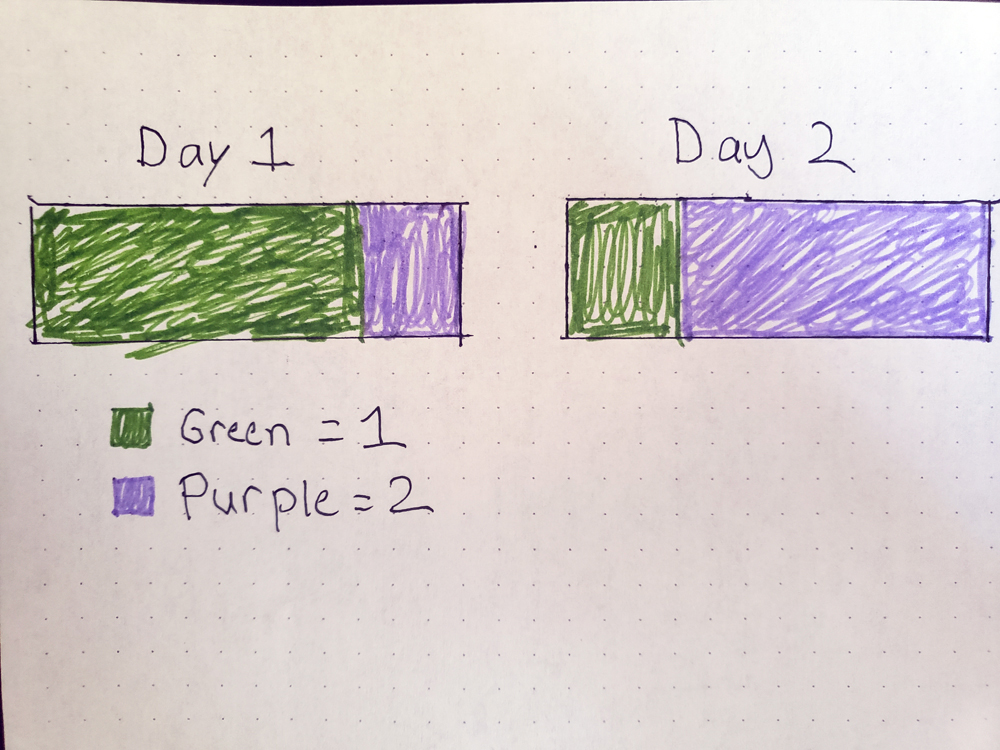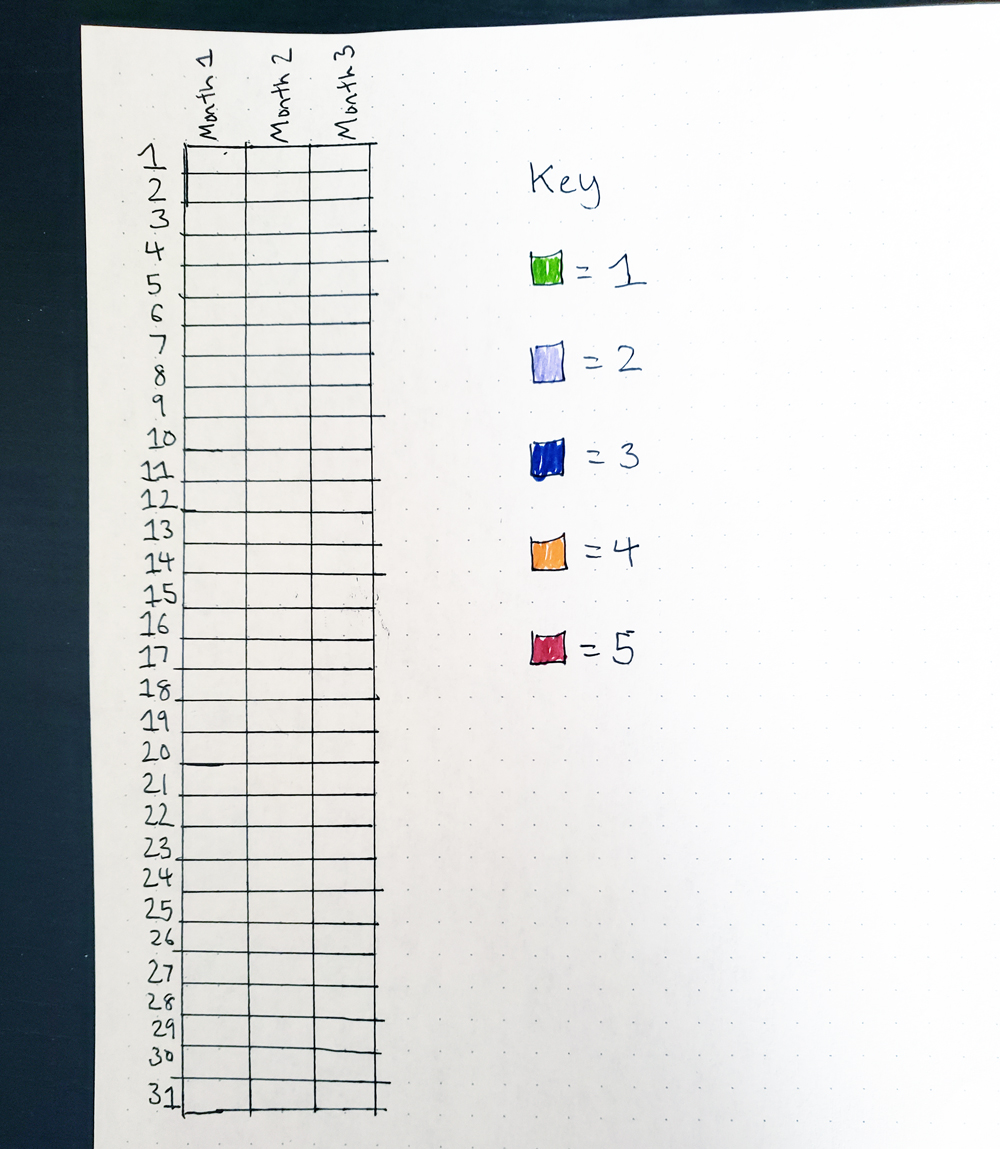I’ve written quite a bit about my anxiety for GeekMom. A few months ago I even reached my one-year therapy anniversary. Over this past year or so, I’ve learned a lot about how my anxiety works, some of the things that trigger or exacerbate it, and ways to manage it. A few months ago, during a higher anxiety period, I decided to incorporate tracking my anxiety levels into my bullet journal because I had some suspicions about patterns I had noticed that were more likely to lead to anxiety spikes and I wanted that data available in a way I could easily read it.
The first part was that I needed to decide how I was organizing that data as well as a method to roughly measure what my anxiety levels for the day were. When it came to measuring my anxiety, coming up with a method wasn’t too hard. I started with a number scale of 1-5, with 1 being no noticeable signs of anxiety and 5 being what my anxiety looks like at its worse. Since my therapist had taught me to recognize physical symptoms that occurred when I was anxious, I simply had to assign them a number based on how high an anxiety level they described with me. Here are some symptoms I have or have heard others describe. Yours may have variations, of course:
- Anxious thoughts minor (easier to redirect)
- Anxious thoughts major (harder to redirect)
- Pacing or restless behaviors
- Sleep issues
- Stomach irritability
- Panic attacks
- Headaches
- Increased heart rate
- Sweating
- Shaking/trembling
- Emotional outbursts
Once I had assigned a number to my particular symptoms, I could kind of quickly assess when I was sliding up the number scale and how fast. If my level goes from a 2 to a 4 in a short period of time, I know I need to take steps to redirect things pretty quickly. On another note, after a rough patch, I have a way to measure and note when my levels are shifting or trending downwards. Sometimes knowing that I am shifting down is a big reassurance in itself.
Now with a way to measure things, I needed a way to organize the data I was collecting. I didn’t want to just record a single number for each day. That’s not always easy to visualize patterns when looking over, and it’s not always the best overview of a day. If I spend three-quarters of a day at a 1 and one-quarter at a 2, that should be viewed differently than a day where I spent three-quarters at a 2 and one-quarter at a 1. Recording both as a 2 doesn’t differentiate the differences between a day that was mostly no anxiety and another that was mostly low anxiety. Saying it ran from a 1-2 still does not differentiate that difference.

I decided to use colors. By assigning each number to a color, I could fill a little rectangle each day and roughly break down how much of the day I was existing at what level. Now some people make beautiful pictures with their trackers where the whole monthly tracker is like a starry sky and each star is numbered and colored in. While visually gorgeous, it isn’t the easiest to read data-wise. My version is basically a table, with one side being the day of the month and the other side the month. This lets me look over several months of trends very quickly. If I’m trying to see where the highest spots are, I know exactly what colors I’m trying to find a high concentration of. Since I also do a daily diary-type entry in my journal, I make a note of stressors of things that made me anxious that day, so if I want to go back and see what was happening during anxiety spikes, I can.

Since starting this, there are a few things I have noticed that make me glad I started doing this. First off, I confirmed a few of the patterns I suspected including how my monthly hormone cycle might be impacting my anxiety. Catching these patterns definitely helps me prepare and manage my anxiety a lot better. I can predict when I may need to fortify the self-care a little extra, which does help. I also noticed I spend more time in lower levels than I realize. It gets easy to fixate on how many days you feel like your existing in higher anxiety levels, but seeing the data actually reminded me that’s it’s not all the time, and I feel like that was a huge morale boost for feeling like I was making progress.
So, if you have anxiety and journaling is something you do or are interested in doing, you may want to see if tracking your anxiety levels is helpful for you.



